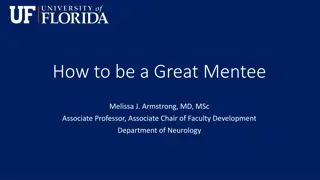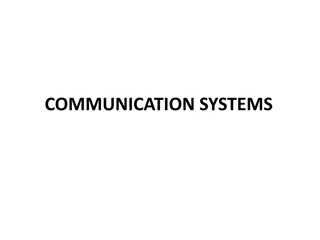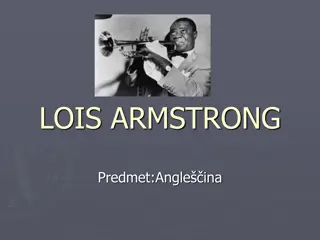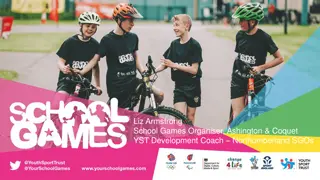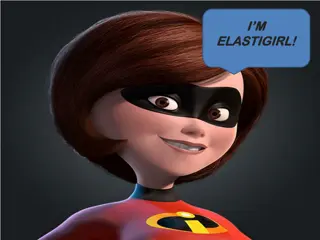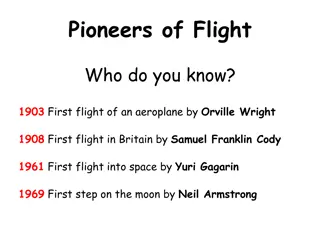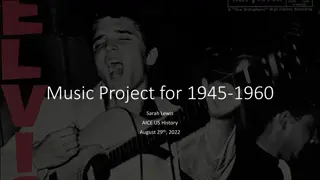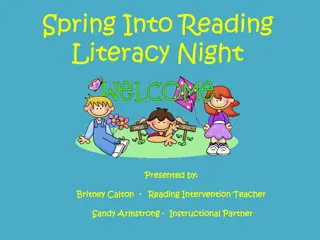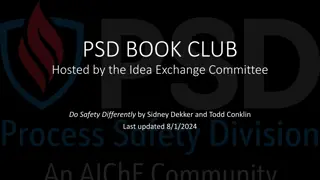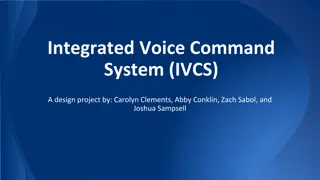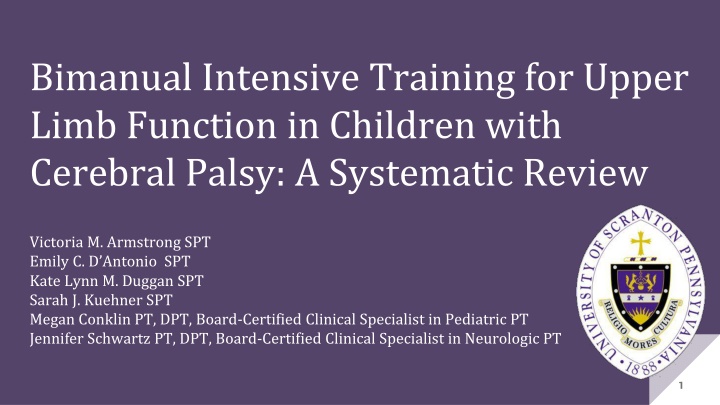
Bimanual Intensive Training in Children with Cerebral Palsy: A Systematic Review
Explore the effectiveness of Bimanual Intensive Training (BIT) on upper limb function in children with cerebral palsy through a comprehensive systematic review. BIT emphasizes functional activities using bilateral upper limbs to improve motor skills. Learn about the purpose, methods, results, conclusions, and clinical relevance of BIT for children with CP.
Download Presentation

Please find below an Image/Link to download the presentation.
The content on the website is provided AS IS for your information and personal use only. It may not be sold, licensed, or shared on other websites without obtaining consent from the author. If you encounter any issues during the download, it is possible that the publisher has removed the file from their server.
You are allowed to download the files provided on this website for personal or commercial use, subject to the condition that they are used lawfully. All files are the property of their respective owners.
The content on the website is provided AS IS for your information and personal use only. It may not be sold, licensed, or shared on other websites without obtaining consent from the author.
E N D
Presentation Transcript
Bimanual Intensive Training for Upper Limb Function in Children with Cerebral Palsy: A Systematic Review Victoria M. Armstrong SPT Emily C. D Antonio SPT Kate Lynn M. Duggan SPT Sarah J. Kuehner SPT Megan Conklin PT, DPT, Board-Certified Clinical Specialist in Pediatric PT Jennifer Schwartz PT, DPT, Board-Certified Clinical Specialist in Neurologic PT 1
Overview 1. Background 2. Purpose 3. Methods 4. PRISMA 5. PEDro Scoring 6. Results 7. Conclusion 8. Clinical Relevance 9. Limitations 10.Future Research 11.Take Home Message 2
Bimanual Intensive Training (BIT)1 Practice of functional activities using bilateral upper limbs Hand Arm Bimanual Intensive Training (HABIT) Specific BIT program focused on intensity of training and progression of skill difficulty Includes part and whole practice and modification of tasks to ensure use of the more affected limb 3
BITContinued2 Tasks included in BIT are progressively challenging and require increased behavioral demands and active participation Specific task training may elicit cortical reorganization BIT is often utilized as a treatment program for children with cerebral palsy 4
Cerebral Palsy (CP)2-3 Group of disorders that affect movement, balance, and posture Most common physical pediatric disability Caused by lesions in the cortical pathways and motor cortex Result in varied motor and neurological deficits No cure but early intervention can improve outcomes and function Size of lesion in the brain does not change over time Symptoms may change over lifetime 5
Unilateral Spastic Hemiplegia3 Most common form of CP 80% of CP is Spastic Affects only one side of the body UE usually more affected than LE Common Symptoms Variations in muscle tone Ataxia Gait dysfunction (crouched gait, scissoring, etc.) 6
Purpose The purpose of this study was to determine the effectiveness of bimanual intensive training (BIT) on upper limb (UL) function in children with cerebral palsy (CP). 7
Methods: Databases CINAHL ProQuest Pubmed Cochrane 8
Methods: Search Terms (Cerebral palsy OR CP) AND (children OR child OR adolescents OR youth OR teenager OR pediatric OR paediatric OR kids OR kid) AND ( HABIT OR hand-arm bimanual intensive training OR HABIT-ILE ) AND ( physical therapy OR physiotherapy OR rehabilitation OR rehab OR physical therapist OR physiotherapist OR PT) 9
Methods: Search Limits English language Human subjects Published from 2008-current Peer-reviewed 10
Methods: Selection Criteria Birth-18 years old Diagnosis of cerebral palsy Use of bimanual intensive training RCTs with upper limb function outcome measures 11
PRISMA 12
PEDro Scoring Title and Author 1 2 3 4 5 6 7 8 9 10 11 Total Brand o et al1- Comparison of Structured Skill and Unstructured Practice During Intensive Bimanual Training in Children With Unilateral Spastic Cerebral Palsy. Y Y Y Y N N Y Y Y Y Y 8/10 Bleyenheuft et al2- Hand and Arm Bimanual Intensive Therapy Including Lower Extremity (HABIT-ILE) in Children With Unilateral Spastic Cerebral Palsy: A Randomized Trial. Y Y Y Y N N N Y N Y Y 6/10 Sakzewski et al4- Participation outcomes in a randomized trial of 2 models of upper-limb rehabilitation for children with congenital hemiplegia Y Y Y Y N N N Y Y Y Y 7/10 13
PEDro Scoring Continued Title and Author 1 2 3 4 5 6 7 8 9 10 11 Total Deppe et al5- Modified constraint-induced movement therapy versus intensive bimanual training for children with hemiplegia a randomized controlled trial Y Y Y Y N N Y Y N Y Y 7/10 Hung et al6- The effect of intensive bimanual training on coordination of the hands in children with congenital hemiplegia N Y N N N N Y Y N Y Y 5/10 Gelkop et al7- Efficacy of constraint-induced movement therapy and bimanual training in children with hemiplegic cerebral palsy in an educational setting. Y Y Y Y N N Y Y Y Y Y 8/10 14
PEDro Scoring Continued Title and Author 1 2 3 4 5 6 7 8 9 10 11 Total Gordon et al8- Bimanual training and constraint- induced movement therapy in children with hemiplegic cerebral palsy: a randomized trial. Y Y Y Y N N Y Y Y Y Y 8/10 Ferre et al9- Caregiver-directed home-based intensive bimanual training in young children with unilateral spastic cerebral palsy: a randomized trial. Y Y Y Y N N Y N Y Y Y 7/10 de Brito Brand o et al10- Functional impact of constraint therapy and bimanual training in children with cerebral palsy: a randomized controlled trial. Y Y Y Y N N N Y N Y Y 6/10 15
PEDro Scoring Summary Range: 5/10 - 8/10 Average: 6.9/10 8/10: 3 articles1,7,8 7/10: 3 articles4,5,9 6/10: 2 articles2,10 5/10: 1 article6 16
Study Characteristics Sample sizes ranged from 12 to 63 subjects Ages ranged from 1.5 to 16 years old Hemiplegic cerebral palsy Treatment parameter ranged from 60 to 96 hours of treatment time 6 out of 9 studies used a total of 90 hours1,2,6-10 17
Study Characteristics Continued Outcome measures used: Assisting Hand Assessment (AHA)1,2,5,7-9 Canadian Occupational Performance Measure (COPM)1,4,9,10 Pediatric Evaluation of Disability Inventory (PEDI)1,2 Jebsen Taylor Test of Hand Function (JTTHF)1,8 Assessment of Life Habits (LIFE-H)4 18
Study Characteristics Continued Outcome measures used, continued: Quality of Upper Extremity Skills Test (QUEST)7,8 School Function Assessment (SFA)4 Goal Attainment Scale (GAS)8 ABILHAND-Kids1,2 Box & Blocks Test9 19
Results1-2, 4-10 All 9 studies showed significant improvement in the following outcome measures: AHA (5 studies)1-2, 5, 7-8 COPM (4 studies)1, 4, 9-10 PEDI (2 studies)1-2 JTTHF (2 studies)1, 8 QUEST (2 studies)7-8 ABILIHAND-Kids (2 studies)1-2 LIFE-H (1 study)4 GAS (1 study)8 20
Results Continued4-8, 10 One study found greater improvements in children with more severe impairments at baseline5 Six studies compared BIT to constraint-induced movement therapy (CIMT)4-8, 10 Significant improvements in both group with no significant differences between groups Greater carryover to functional tasks seen in BIT group 21
Conclusion There is moderate to strong evidence to support the use of bimanual intensive training to improve upper limb and hand function in children with cerebral palsy Optimal treatment parameters cannot be concluded At least 60 hours to show significant improvements 22
Clinical Relevance Most functional activities require bimanual upper limb use, therefore BIT is more task specific BIT may be better tolerated than CIMT due to lack of restraint Inexpensive and does not require special equipment Can be done in a variety of settings Home, school, camp, outpatient 23
Limitations Small sample sizes Variety of outcome measures Lack of long-term follow-up Multiple studies performed by the same group of researchers Limited number of databases searched 24
Future Research Long-term outcomes Most effective treatment parameters Optimal age for beginning intervention 25
Take Home Message BIT has been shown to lead to significant improvements in upper limb function in children with cerebral palsy BIT is safe, inexpensive, and easy to administer Clinicians should consider incorporating BIT for functional tasks when working with this population 26
Acknowledgements Thank you! Dr. Jennifer Schwartz PT, DPT, Board-Certified Clinical Specialist in Neurologic PT Dr. Megan Conklin PT, DPT, Board-Certified Clinical Specialist in Pediatric PT Dr. Tracey Collins PT, DPT, Board-Certified Clinical Specialist in Geriatric PT DPT Faculty and Students 27
References 1. Brand o MB, Ferre C, Kuo H-C, et al. Comparison of Structured Skill and Unstructured Practice During Intensive Bimanual Training in Children With Unilateral Spastic Cerebral Palsy. Neurorehabil Neural Repair. 2013;28(5):452-461. doi:10.1177/1545968313516871. Bleyenheuft Y, Arnould C, Brando MB, Bleyenheuft C, Gordon AM. Hand and arm bimanual intensive therapy including lower extremity (HABIT-ILE) in children with unilateral spastic cerebral palsy: a randomized trial. Neurorehabil Neural Repair. 2015;29(7):645-657. doi:10.1177/1545968314562109. Cerebral Palsy (CP). cdc.gov. https://www.cdc.gov/ncbddd/cp/index.html. Updated April 30, 2019. Accessed September 18, 2019. Sakzewski L, Ziviani J, Abbott DF, Macdonell RA, Jackson GD, Boyd RN. Participation outcomes in a randomized trial of 2 models of upper-limb rehabilitation for children with congenital hemiplegia. Arch Phys Med Rehabil. 2011;92(4):531-539. doi:10.1016/j.apmr.2010.11.022 Deppe W, Thuemmler K, Fleischer J, Berger C, Meyer S, Wiedemann B. Modified constraint-induced movement therapy versus intensive bimanual training for children with hemiplegia - a randomized controlled trial. Clin Rehabil. 2013;27(10):909-920. doi:10.1177%2F0269215513483764 Hung YC, Casertano L, Hillman A, Gordon AM. The effect of intensive bimanual training on coordination of the hands in children with congenital hemiplegia. Res Dev Disabil. 2011;32(6)2724-2731. doi: 10.1016/j.ridd.2011.05.038 Gelkop N, Burshtein DG, Lahav A, Brezner A, Al-Oraibi S, Ferre CL, Gordon AM. Efficacy of constraint-induced movement therapy and bimanual training in children with hemiplegic cerebral palsy in an educational setting. Phys Occup Ther Pediatr. 2015;35(1):24-39. doi:10.3109/01942638.2014.925027 Gordon AM, Hung YC, Brandao M, et al. Bimanual training and constraint-induced movement therapy in children with hemiplegic cerebral palsy: a randomized trial. Neurorehabil Neural Repair. 2011;25(8):692-702. doi:10.1177/1545968311402508 Ferre CL, Brand o M, Surana B, Dew AP, Moreau NG, Gordon AM. Caregiver-directed home-based intensive bimanual training in young children with unilateral spastic cerebral palsy: a randomized trial. Dev Med Child Neurol. 2016;59(5):497-504. doi:10.1111/dmcn.13330. de Brito Brand o MB, Gordon AM, Mancini MC. Functional impact of constraint therapy and bimanual training in children with cerebral palsy: a randomized controlled trial. Am J Occup Ther. 2012;66(6):672-681. doi:10.5014/ajot.2012.004622 2. 3. 4. 5. 6. 7. 8. 9. 10. 28
Questions? 29


